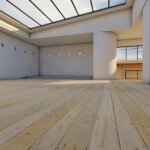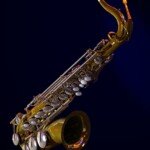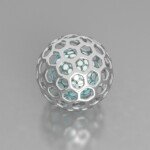Beyond the Blueprint: A Practical Guide to Mastering CNC Prototyping
So, you’ve got a great idea for a new part—maybe it’s a critical aerospace component, a revolutionary medical implant, or the next breakthrough consumer electronics product. Before you go into mass production, you need a physical prototype. Not just a rough mockup, but an accurate functional representation that allows you to test, validate, and refine your design. where is this CNC (Computer Numerical Control) Prototyping It shines as an indispensable tool in the modern product development arsenal. Unlike rapid prototyping methods that focus primarily on shape, CNC prototyping delivers unparalleled precision and material integrity from the start. Let’s dive into the basics that make it so powerful.
Core concept: finely carved steel (or aluminum, or titanium…)
The core of CNC prototyping is the use of pre-programmed computer software to control the motion of complex machine tools. This code controls the tool to spin at incredibly high speeds, carefully removing material from a solid block (blank or workpiece) to carve out the shape of your design, layer by layer. Think of it as highly skilled digital sculpting, but with the ability to achieve micron-level tolerances using real-world engineering materials.
Why use CNC for prototyping? Unparalleled Advantages
- Unparalleled precision and tight tolerances: CNC machining allows extremely tight dimensional tolerances (typically as low as +/- 0.001 inches, and even smaller when using multi-axis machines). This is critical for functional prototypes that must fit with existing components, perform stress testing, or validate complex assembly designs.
- Real material properties: Need a prototype made from aerospace-grade titanium, medical implantable stainless steel, high-strength aluminum, or durable industrial plastic? CNC uses the exact same materials as the final production. This allows for accurate testing of strength, weight, thermal properties, corrosion resistance and actual performance under load.
- Excellent surface finish: CNC machining produces a superior surface finish compared to most additive processes performed directly on the machine. While post-processing can further enhance this, CNC prototypes often have a near-production-ready look and feel, which is critical for ergonomic testing or aesthetic evaluation.
- Functional testing is ready: Because CNC prototypes are made from solid materials with precise geometries, they are inherently strong enough to undergo functional testing—handling forces, fluid flow, thermal cycling, or assembly trials of mating parts.
- Smooth transition to production: Designs validated through CNC prototyping are fundamentally proven for CNC manufacturing. This greatly reduces risk and redesign iterations when scaling up production, especially when working with a partner like GreatLight that manages both phases.
CNC prototyping workflow: from idea to action
- 3D CAD model: It all starts with a watertight 3D digital model of your part (e.g. STEP, IGES, SolidWorks, CATIA, etc.). This is the digital blueprint.
- CAM programming: Using specialized computer-aided manufacturing (CAM) software, engineers can generate precise instructions (G-code) that instruct a CNC machine exactly how it will move its tooling to make the part. This involves selecting cutting tools, defining cutting paths, speeds, feeds and strategies. This step requires a lot of expertise.
- Machine settings: A suitable material blank is securely fixed to the CNC machine’s workbench. The tool is loaded into the machine’s tool magazine. Establish critical datums to accurately align the machine’s coordinate system with the workpiece.
- Machining operations: The machine executes the programmed code. Common operations include:
- Milling: Rotating cutting tools remove material from the workpiece. 3-axis (X, Y, Z) is standard, but 5-axis functionality offers significant advantages (more details below).
- Turning: The workpiece rotates while a stationary cutting tool removes material, ideal for cylindrical parts (lathes).
- Drilling/Tapping: Create holes and threads.
- Post-processing (optional but common): While CNC can provide an excellent surface finish, prototypes often require additional steps: deburring (removing sharp edges), sanding/polishing, heat treating, plating, anodizing, painting, etc.
- Inspection and delivery: Before delivery, finished prototypes are carefully inspected against the original CAD model using a coordinate measuring machine (CMM), optical scanner or precision hand tools to verify dimensional accuracy and quality.
Why 5-Axis CNC is a Game Changer for Prototyping (GreatLight’s Bread and Butter)
Three-axis CNC is very powerful, but 5-axis CNC machining Take prototyping efficiency, quality and sophistication to new levels:
- Complex geometries are possible: It allows cutting tools to approach the workpiece from nearly infinite angles. This can create highly complex organic shapes, complex undercuts and deep cavities that would be impossible or very time-consuming with 3-axis.
- Significantly reduces setup time: Complex parts often require multiple setups on a 3-axis machine (re-fixing the part for each new angle). 5-axis machine can machine nearly all sides of a part single setting. This saves a lot of time and minimizes setup/registration errors.
- Excellent surface finish: The ability to maintain optimal tool-to-part orientation throughout the cut minimizes tool deflection and allows for a smoother tool path that significantly improves surface finish and often reduces or eliminates manual finishing work.
- Improve accuracy (and consistency): Single-setup machining inherently reduces the cumulative error introduced by multiple setups. Complex features are machined more accurately relative to each other.
- Faster cycle times: More complex cuts can be made with fewer passes and longer tool paths, which directly translates into faster prototype turnaround times.
Choose GreatLight: Your Strategic Prototyping Partner
At Honlite, we live by precision machining. Our focus is not just on making parts; It’s about empowering your innovation through superior prototyping:
- Advanced 5-axis machining core: Our shop is centered around a state-of-the-art 5-axis CNC machining center designed to handle the most geometrically challenging prototypes made from a variety of high-performance materials.
- Material Master: We specialize in processing a variety of metals (Aluminum, Stainless Steel, Titanium, Inconel, Brass, Copper, Tool Steel) and Engineering Plastics (PEEK, Delrin, UHMW, Nylon, PTFE) to perfectly meet your functional requirements.
- Post-integration processing: In addition to machining, we offer a full suite of finishing services – anodizing, plating, heat treating, painting, polishing and custom finishing – providing a true one-stop solution for fully realized prototypes.
- Customization and speed: Every prototype is custom-made in nature, and we thrive on technical challenges. Utilizing our advanced equipment and streamlined processes, we prioritize quick turnaround without compromising accuracy or quality.
- The concept of accuracy first: Prototypes are meaningless without accuracy. Our commitment to tight tolerances and rigorous inspection ensures that the prototype you hold faithfully and functionally expresses your design intent. We know these are not just testware; they are testware. They are critical stepping stones to your successful product.
Conclusion: Confident Prototype, Definite Release
CNC prototyping bridges the critical gap between digital design and physical reality. Its unique combination of accuracy, true material properties, functional capabilities and direct production access make it an irreplaceable method for engineers and innovators who need tangible validation. Moving beyond basic 3-axis machining to the capabilities of 5-axis technology can unlock unprecedented design freedom and manufacturing efficiency, which is especially important for complex assemblies.
Choosing the right manufacturing partner is critical. With GreatLight’s advanced 5-axis CNC machining expertise, extensive materials capabilities and integrated finishing services, we deliver the precision, speed and reliability needed to transform your visionary designs into perfectly realized prototypes. Let us help you validate, iterate and refine your innovations faster and more efficiently.
Ready to bring your designs to life with unparalleled precision? [Contact GreatLight today for a quote on your CNC prototyping project!] Customize your precision parts now at the best prices!
Frequently Asked Questions (FAQ) about CNC Prototyping
-
Q: When is CNC prototyping better than 3D printing (additive manufacturing)?
- one: Choose CNC when you require: extremely high precision/tolerance, parts made from specific high-strength metals or engineering plastics, functional testing under load or harsh environments, superior surface finish, or parts that directly represent the properties of the final production material. 3D printing excels at handling extremely complex geometries that are not suitable for machining (sometimes), very fast shape studies (especially low-cost plastics), and internal features.
-
Q: How expensive is CNC prototyping?
- one: Costs vary widely based on part complexity, size, materials, required tolerances, surface finish and quantity. although often higher each part Compared to basic 3D printing of simple shapes, 5-axis CNC offers excellent value, often eliminating the need for expensive fixtures and multiple setups required for complex parts in 3 axes. We focus on optimizing our processes to deliver the best value and speed.
-
Q: What materials can you process for prototypes?
- one: We specialize in a wide range of materials: metals (aluminum (various grades), stainless steel (304, 316, 17-4PH, etc.), titanium (Gr 2, 5, etc.), brass, copper, tool steel, Inconel, magnesium) and engineering plastics (PEEK, Delrin/acetal, nylon, PTFE/Teflon, UHMW, polycarbonate, ABS, acetal). Choose based on your functional needs!
-
Q: What accuracy and tolerances can you achieve?
- one: Backed by a rigorous inspection process, our multi-axis machining centers typically hold critical features to tolerances of +/- 0.001 in. (0.025 mm) or better. Depending on the part geometry and material, tighter tolerances can be achieved.
-
Q: How to prepare for CNC prototyping (Design for Manufacturability – DfM)?
- one: Consider tool access (avoid deep cavities with narrow openings), include draft angles when possible, specify practical tolerances only when critical (they add cost), use rounded corners instead of sharp inside corners (tool radius limitations), and choose standard stock sizes. Providing clean CAD files is critical. We provide DfM feedback when quoting!
-
Q: Why choose GreatLight over other prototyping shops?
- one: Giant Light United Advanced 5-axis functionality For maximum flexibility and accuracy in complex parts, depth Materials expertise Across metals and plastics, comprehensive Integrated post-processingunremitting attention Speed and responsivenessand a core engineering-driven commitment to Accuracy and quality. We are your strategic partner in the product development process.
- Q: Can you handle post-processing?
- Answer: Of course. We offer a full range of services: bead blasting/sand blasting, polishing, anodizing (Type II, Type III/hard coat), electroplating (nickel, chromium), heat treatment, painting, passivation, custom packaging, and more. Get completed, ready-to-use prototypes directly from us.









































